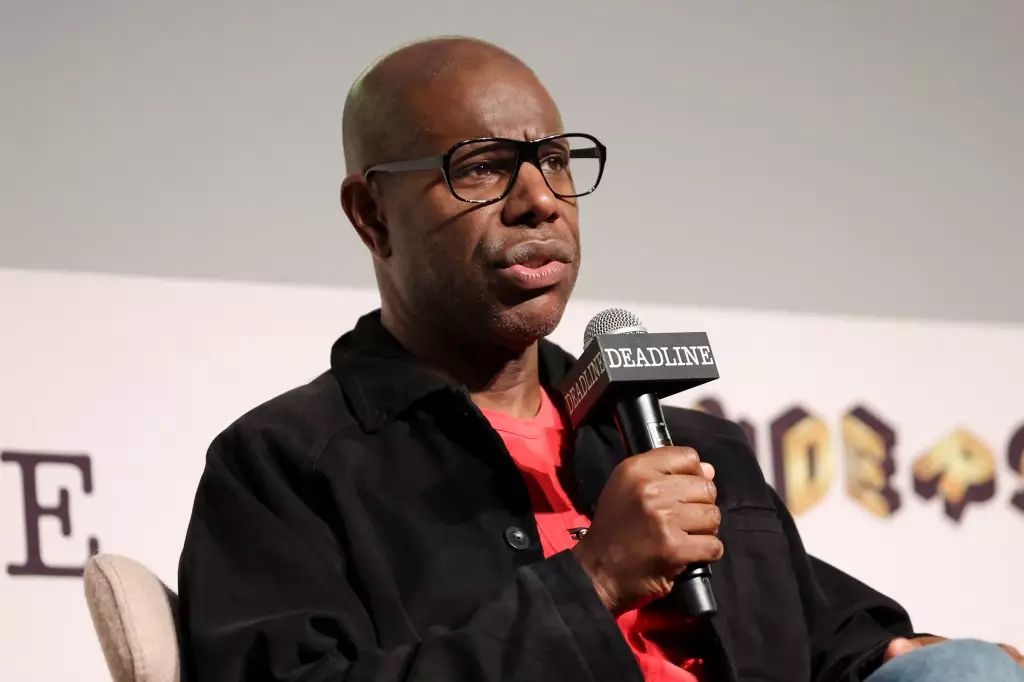Hollywood has long been fascinated by the complex tapestry of World War II, weaving countless stories that elicit a myriad of emotions: fear, bravery, loss, and resilience. However, the distinct narrative allows for a refreshingly novel exploration of trauma and survival through the innocent eyes of a child. Renowned filmmaker Steve McQueen is taking a bold step in this direction with his latest project, “Blitz,” which centers on the experiences of a nine-year-old boy navigating the dangers of war-torn London. In a world so often muddied by adult cynicism, McQueen’s choice of a youthful perspective offers a poignant lens to examine the emotional and psychological turmoil that accompanies conflict.
At the heart of “Blitz” is George, portrayed by Elliot Hefferman, a young boy determined to return to his mother, Rita, played by the talented Saoirse Ronan. This journey is visceral—a physical quest that mirrors the emotional journey of countless families torn asunder by war. McQueen’s emphasis on childhood innocence serves as a stark contrast to the grim realities of World War II. By focusing on George’s defiance and determination, McQueen invites audiences to reflect on the raw and unfiltered lens through which children perceive pain and loss. This perspective starkly contrasts the often-repeated narratives told from the vantage of hardened adults, making the film a fresh take on a well-known historical saga.
McQueen himself elaborates on this narrative choice, explaining that adults often lose their innate curiosity and ability to see the world anew, overshadowed by life’s burdens. He draws inspiration from his daughter’s innocent wonder, using her childlike perspective as a reminder of what is often overlooked. Through George’s experience, “Blitz” aims to catalyze a re-examination of the historical accounts of the war that audiences might have grown numb to over the years.
The film’s authenticity extends beyond its narrative choices; it is also firmly rooted in the culture and dialect of East London during the 1940s. Ronan’s commitment to portraying Rita’s character necessitated rigorous preparation, including working with a dialect coach to authentically capture the now-diminished Cockney accent. This detail highlights the importance of linguistic nuances in conveying character depth and connecting with historical context.
Ronan’s insight into the working-class accents of the time adds a layer of depth to the film, enhancing its emotional resonance. The effort to evoke a “vintage sound” highlights how the film constructs a bridge to a past that audiences need to feel, rather than just observe. The conduit of language serves as a powerful reminder that the everyday struggles of ordinary people endure even amid extraordinary circumstances.
“Blitz” is not merely a film about survival; it is a powerful exploration of what it means to care, love, and fight for those we hold dear amidst catastrophic events. By positioning George’s quest to reconnect with his family at the film’s core, McQueen ensures the emotional stakes resonate on a deeply human level. The search for connection amid chaos invites viewers to consider their own relationships and what could be lost when faced with immense uncertainty.
As the world continues to grapple with its historical narratives, McQueen’s “Blitz” is a critical examination of perception and empathy. By allowing audiences to perceive the shadows of World War II through a child’s wide-eyed wonder and anguish, the film reinvigorates historical discussions with emotional and ethical implications that are profoundly relevant today.
In a cinematic landscape filled with remakes and historical retellings, Steve McQueen’s unique approach to the World War II narrative reminds us that the simplest perspectives can often yield the most complex and deeply felt truths.


Leave a Reply